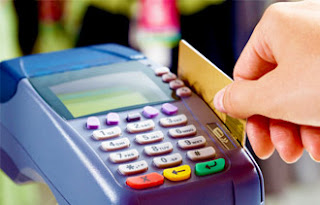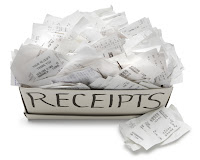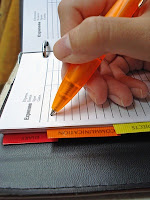Hopefully you found Step 1: Track Your Spending (Part I) easy to complete. Fixed and Fixed-Variable Expenses are typically the easiest to track because you get bills reminding you that you owe money to someone and there is normally a due date attached to those bills. Yes, Iʻm talking about those ones that come in the mail and you put them on the side without opening them, secretly wishing that they would magically disappear. On the other hand, if you have auto payments, then you might not have been aware of the exact amounts that you spend on these expenses every month. Hopefully, this exercise helped you be more mindful of this type of expenses.
The next part of Step One is to track your variable expenses. These are probably the most difficult to track because most of these expenses are made unconsciously with a swipe or handing over a $20 bill. These expenses add up very quickly and this is where most people donʻt realize how much they are spending on something like a daily cup of coffee, until you add up your spending over a period of time.
Step 1: Track Your Spending (Part (II)
3. Variable Expenses
Variable expenses is everything else that you spend your money on. Again, this is probably the hardest to track. Here are a few ways to track variable expenses, select the one that is easiest for you:
Variable expenses is everything else that you spend your money on. Again, this is probably the hardest to track. Here are a few ways to track variable expenses, select the one that is easiest for you:
 Method: Bank Statement
Method: Bank StatementIf you are a swiper, meaning you mostly use your debit card to pay for things. This is the easiest way to track your variable spending. Get a copy of your bank statement for the last full month. For example, it is April 5th, so you would look at March's bank statement. Go through transaction by transaction and categorize your spending into like categories (Gas, Groceries*, Dining Out, Entertainment, Clothing, Etc.) Total your spending for each category.
 Method: Receipts
Method: ReceiptsIf you use cash or a mixture of cash and debit card, and you keep your receipts. Then gather your receipts for the last full month. Go through each receipt and categorize your spending into like categories (Gas, Groceries*, Dining Out, Entertainment, Clothing, Etc.) Total your spending for each category.
 Method: Journaling
Method: Journaling If you are not able to use bank statements or receipts to track your spending. Take the next month to journal how much you spend. There are smart phone apps to track your spending that will even allow you to select a spending category and will report the totals for each category. You can also just take a small notebook with you and log every transaction you make. This method takes a little more time than the others. But creating a budget is a process.
You can either hand write these amounts, but I find using an excel spreadsheet is easiest because it will do the calculations for you. If you donʻt have every transaction you made in the prior month, donʻt sweat it. Get as many as you can. The more you have, the more accurate picture you have our your spending habits.
Keep in mind as you go through your bank statement, receipts or as you journal look at what you are spending your money on. Is it a NEED or is it a WANT? You can also notate next to each transaction a (N) or a (W). All the W's is where you can trim your spending to be able to stay on budget. This will be discussed in a later step of Creating a Budget.
Here is what tracking your Variable Expenses might look like:
Step 2: Tracking your Income & Step 3: Comparing Income:Expenses
Note* If you receive SNAP Benefits (aka EBT or Food Stamps) be sure to still include the amount you spend on food in your tracking.

No comments:
Post a Comment